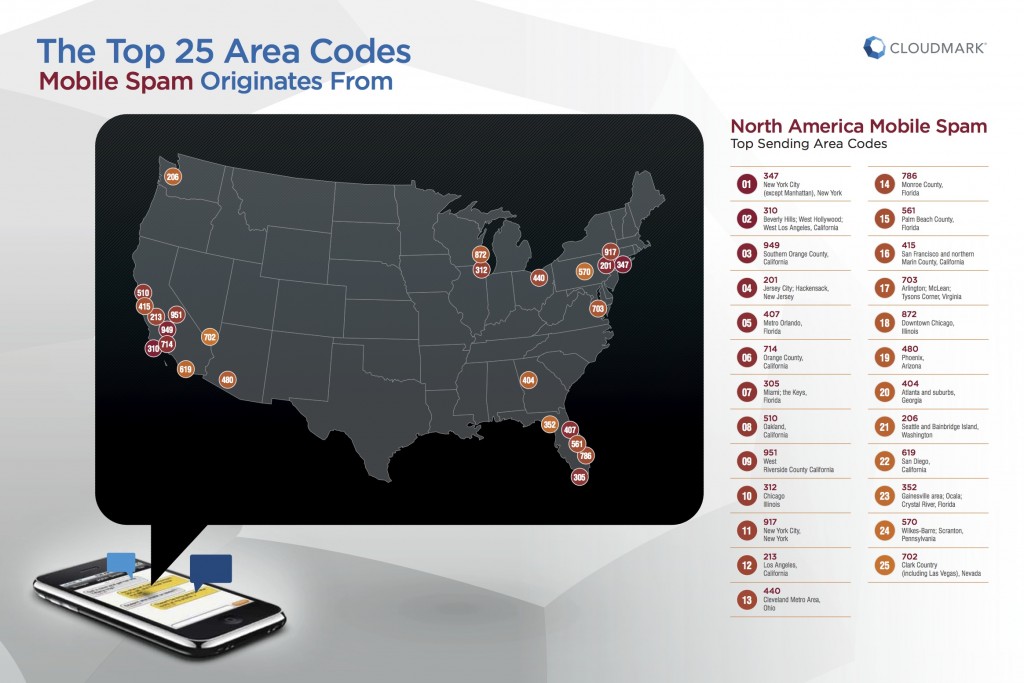The number of unique SMS scams have quadrupled over the first five months of this year - and it's little surprise. SMS text message open rates are reportedly as high as 90% or better, with the
DMA reporting SMS messaging click through rates of 14% and an 8.22% conversion rate. Conversely, email has an open rate of only 20%-25%, click through of 6% or less and a measly 1.73% conversion rate. In other words, SMS offers a better ROI (return on investment) for spammers.
So where is all the SMS spam coming from? According to an analysis of Cloudmark data, the majority of SMS text messaging spam originates from New York City, Southern California, New Jersey, and Florida. Several possibilities exist for why this is so.
- SMS spammers prefer to live in major metropolitan areas. Indeed, if you view the infographic below illustrating the top 25 senders' area codes, these map fairly well to the top most populated metro areas..
- SMS spammers are targeting recipients that live in major metro areas. This theory actually doesn't pan out. Further analysis shows that only about 36% of top sender and recipient area codes overlap.
- Long code providers are more prevalent in major metro areas. This last theory is probably the most apt. Long codes are a virtual 10-digit phone number that enable the sending and receiving of SMS over landlines - no mobile device needed. Long codes are not only low cost and efficient, the virtual numbers are not tightly regulated as short codes are and thus provide a more hospitable environment for would-be spammers.
In fact, when viewed from a total volume perspective, spammers using short codes aren't nearly as common - the majority of SMS spam and scams come in via long code numbers. And speaking of scams, of those unsolicited SMS text messages, about 92% of SMS spam are fraud-related scams designed to harvest personal information and/or trick the recipient into doing something costly and unwise.


